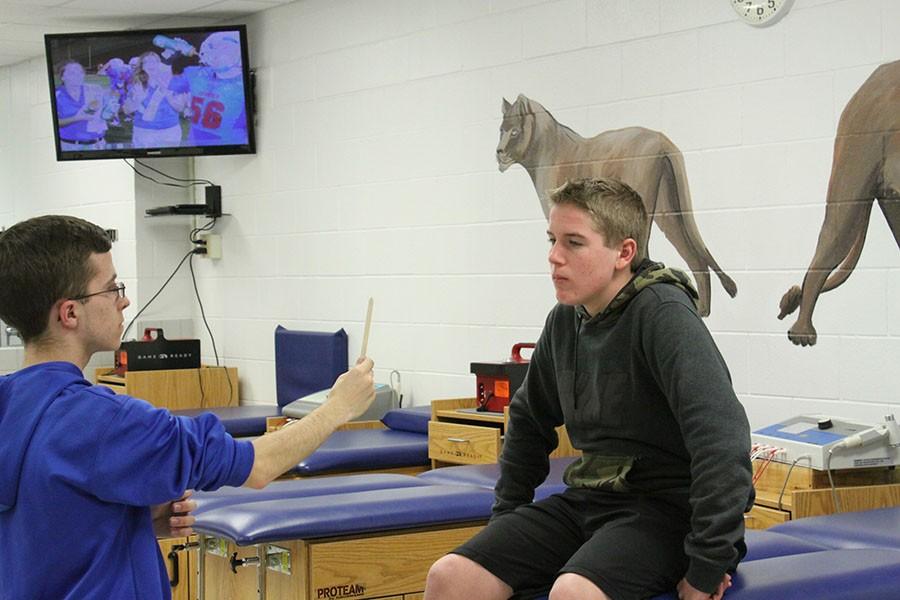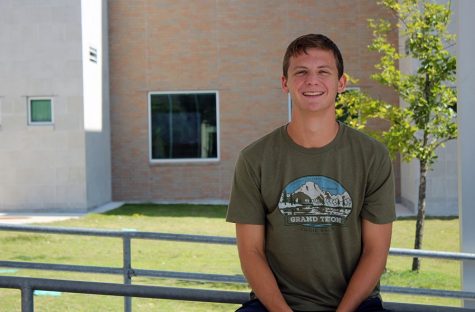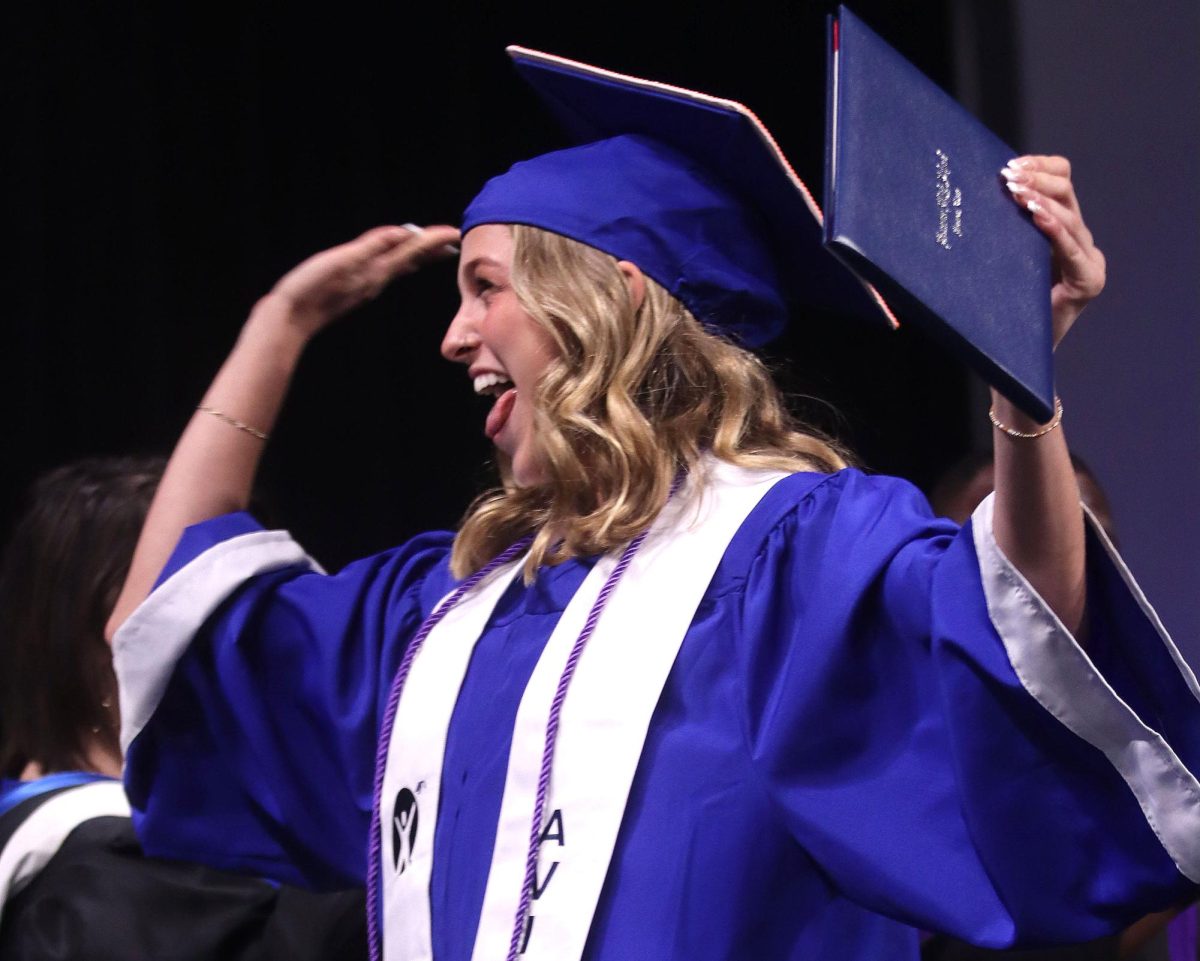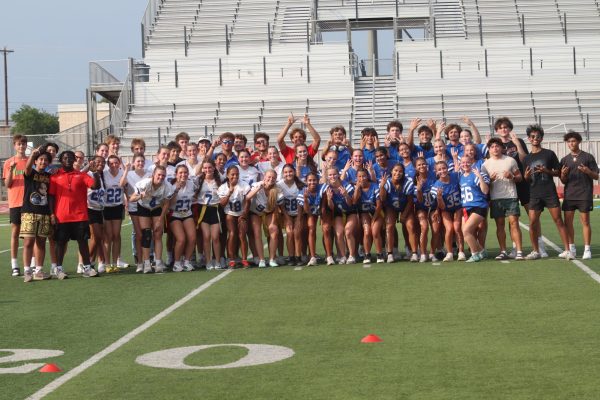Tackling the problem head on
Concussions becoming more common in student sports
Freshmen Riley Wells and senior Zach Patton demonstrate how to test a concussion. Concussions can cause numerous types of injuries in numerous types of ways.
February 3, 2016
In 2012 there were approximately 3,800,000 concussions reported which was double that from 2002. 47 percent of the reported injuries were high school football alone. On average 1 in 5 high school athletes will sustain a concussion during the season.
“Concussions are never fun,” sophomore Riley Harkleroad said. “It makes it hard to think and focus, and overall your thinking slows down each time.”
Concussion, a movie about the struggle of a doctor trying to spread awareness about NFL concussions, was released but was quickly taken out of theatres. Throughout the nation there has been growing news and awareness over the amount of concussions students are getting and particularly in football. 11 high school football players have died in 2015 from head trauma injuries due to playing the sport.
“It’s different for whatever spot you hit,” freshman Taylor Wilcox said, who has suffered from three concussions. “I had it in the front and back of my head. My eyes couldn’t focus, I had uncontrollable migraines, I couldn’t remember anything and my head felt like it weighed 1000 pounds.”
The aftermath of concussions can be disastrous. Those with severe enough concussions may have to learn to walk again, be extremely sensitive to light and sound, and have learn to live an unassisted life all over again. This is hard to avert, according to trainer Wayne Lauritzen.
“Preventing concussions can be very tough,” Lauritzen said. “There’s been a lot of research that looks at helmets and a lot like that and what we know is that helmets don’t prevent concussions. The majority of concussions we get are from collision type sports like football. With football, it’s going to be more about technique training, making sure the kids when they tackle and they hit they’re keeping their head out of the tackle.”
This applies both in the game and in the practice. Pop Warner, Ivy League and the NFL have all began regulating how many contact practices a team can have. The less contact practice, the safer the brain.
“Concussions are self healing,” Lauritzen said. “There’s nothing we can really do to speed that process up. What we can do is actually limit factors that prolong the concussion. We know that kids who get their concussions, typically if they go back in the classroom too soon, if they’re watching TV, playing video games, texting, that actually stimulates the brain. I always use the analogy that if you hurt your knee you wouldn’t go out running on it while it’s trying to heal. [It’s] the same thing for the brain; while it’s trying to recover you don’t want to stimulate it.”
It’s very important to recognize the signs of a concussion so that it can begin healing sooner. Some of the symptoms include memory problems, dizziness, vision issues, or light and sound sensitivity. If someone is experiencing any of these after a blow to the head, they should see a doctor immediately.
“What happens during a concussion is the way the brain functions and it sends neurons back and forth, that process gets affected.” Lauritzen said. “Different parts of the brain are affected with different concussions. So, some people have no light sensitivity at all, but they have balance issues. Some people have no balance issues, but they have light sensitivity. Every concussion is different, there’s really no one concussion we see with kids.”









